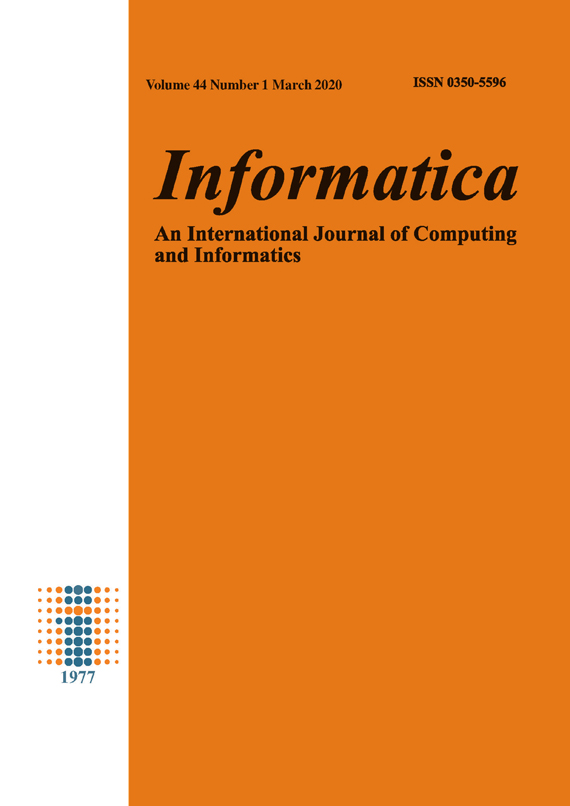Comparison of Community Structure Partition Optimization of Complex Networks by Different Community Discovery Algorithms
DOI:
https://doi.org/10.31449/inf.v44i1.3029Abstract
In reality, complex problems can be transformed into complex networks. Through the community partition of complex networks, the relationship between nodes can be found more clearly. This paper briefly introduced three algorithms for community structure partition of complex networks, which were based on the similarity of common neighbor nodes, ant colony algorithm and density peak clustering, and compared the performance of the three algorithms by using six artificial networks whose chaotic factors gradually increased and two real networks in MATLAB software. The results suggested that the increase of chaotic factors in the artificial network reduced the normalized mutual information (NMI) of the partition results calculated by the three algorithms, but the NMI of the algorithm based on density peak clustering in the same artificial network was the highest, the next was the algorithm based on ant colony algorithm, and the lowest was the algorithm based on the similarity of common neighbor nodes; for the real network, the modularity of the algorithm based on density peak clustering was the highest, the algorithm based on ant colony algorithm was the second, and the algorithm based on the similarity of common neighbor nodes was the lowest. In conclusion, the more fuzzy the community structure is in the complex network, the lower the performance of the partition algorithm is, and the algorithm based on density peak clustering has the best performance.Downloads
Published
How to Cite
Issue
Section
License
I assign to Informatica, An International Journal of Computing and Informatics ("Journal") the copyright in the manuscript identified above and any additional material (figures, tables, illustrations, software or other information intended for publication) submitted as part of or as a supplement to the manuscript ("Paper") in all forms and media throughout the world, in all languages, for the full term of copyright, effective when and if the article is accepted for publication. This transfer includes the right to reproduce and/or to distribute the Paper to other journals or digital libraries in electronic and online forms and systems.
I understand that I retain the rights to use the pre-prints, off-prints, accepted manuscript and published journal Paper for personal use, scholarly purposes and internal institutional use.
In certain cases, I can ask for retaining the publishing rights of the Paper. The Journal can permit or deny the request for publishing rights, to which I fully agree.
I declare that the submitted Paper is original, has been written by the stated authors and has not been published elsewhere nor is currently being considered for publication by any other journal and will not be submitted for such review while under review by this Journal. The Paper contains no material that violates proprietary rights of any other person or entity. I have obtained written permission from copyright owners for any excerpts from copyrighted works that are included and have credited the sources in my article. I have informed the co-author(s) of the terms of this publishing agreement.
Copyright © Slovenian Society Informatika








